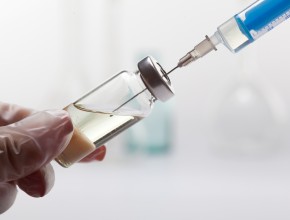Smokers with COPD: Cardiovascular and neuropsychiatric risks of varenicline and bupropion
Highlights for Monday, September 12. McMaster Textbook of Internal Medicine. Published September 12, 2016.
Francois Caron, Roman Jaeschke. Principles of smoking cessation. Part 1. McMaster Textbook of Internal Medicine. Published February 8, 2017.
Zainab Samaan, Roman Jaeschke. Principles of smoking cessation. Part 2. McMaster Textbook of Internal Medicine. Published February 22, 2017.
Francois Caron, Roman Jaeschke. Principles of smoking cessation. Part 3. McMaster Textbook of Internal Medicine. Published March 8, 2017.
In this retrospective cohort study among patients with chronic obstructive pulmonary disease (COPD), the use of varenicline and bupropion was not associated with an increased risk of depression, self-harm, or cardiovascular events.
The authors identified over 14 000 patients with COPD who received treatment for smoking cessation. Among them 10 426 were treated with nicotine replacement therapy (NRT), 350 with bupropion, and 3574 with varenicline. The incidence of various potential complications was measured over the period of 6 months after starting treatment, with the usual treatment duration of 3 months. As this was not an experimental study, results were adjusted for, among others, age, sex, socioeconomic status, degree of dyspnea, presence of medical comorbidities, use of alcohol, and presence of any recorded neuropsychiatric disease. The NRT group was used as a basis for comparison.
Neither bupropion nor varenicline was associated with an increased risk of depression, self-harm, or cardiovascular events. There was an imprecise and not statistically significant trend for an incidenced of coronary artery disease: hazard ratio (HR) for bupropion versus NRT was 1.18 (95% confidence interval, 0.64-2.15). However, HRs were below 1 for all other outcomes, with the incidence of heart failure and depression statistically significantly lower in patients receiving varenicline in comparison to those receiving NRT.
The authors concluded that in smokers with COPD, varenicline and bupropion are unlikely to increase the risk of serious adverse neuropsychiatric or cardiovascular events compared with NRT. The cautious nature of this conclusion is related to the observational nature of the data.
Left main coronary artery disease: CABG vs PCI and DES vs medical therapy
The long-term mortality is similar for patients with left main coronary artery disease treated with coronary artery bypass grafting (CABG) and in those treated with percutaneous coronary intervention (PCI) with drug-eluting stents (DESs).
This network meta-analysis, providing a 3-way comparison of CABG, PCI with DESs, and medical therapy alone showed a survival benefit of both interventional strategies versus medical therapy.
The total mortality and cardiac mortality risks were similar for CABG and DES strategies for up to 5 years of follow-up. The risk of major adverse cardiac and cerebrovascular events was lower within the first 30 days for DESs (fewer strokes) and subsequently increased in comparison to the risk after CABG. This was mostly related to the need for further revascularization (after a year of follow-up) and, to a lesser degree, due to myocardial infarction after 3 years of follow-up.
The authors concluded that PCI with DESs may be a legitimate alternative strategy to CABG, and that individual patients’ values and preferences may influence the decision of the cardiac team.
Prevention and treatment of glucocorticosteroid-induced osteoporosis: 2017 ACR guideline
Use of glucocorticosteroids (GSs) at doses as low as 2.5 mg prednisone per day for over 3 months should prompt consideration of osteoporosis prevention.
Up to 1% of the US population is treated with longer-term GSs. Of those, 10% are diagnosed with fracture, and up to a third have radiological evidence of vertebral fracture. The fastest bone loss occurs within the first 3 to 6 months of long-term GS treatment, and the loss persists with continued GS use. The risk of osteoporotic fractures (mainly vertebral) depends not only on the cumulative and maximum doses of GS, but also on the overall characteristics of the patients, including their age and baseline bone density. Doses of prednisone 7.5 mg per day may be relevant, and even lower doses used over very prolonged periods may increase the fracture risk.
The authors recommend that all adults ≥40 years of age undergo an initial absolute fracture risk assessment using the Fracture Risk Assessment Tool (FRAX) (https://www.shef.ac.uk/FRX/tool.jsp) and bone mineral density (BMD) testing (if available) within 6 months of starting GSs. Younger patients may undergo BMD testing if they have clinical risk factors, which among others include malnutrition, weight loss, thyroid disease, hypogonadism, high alcohol use, and smoking.
A high fracture risk is defined as the presence of a prior osteoporotic fracture, T score for hip or spine mineral density ≤–2.5, or a FRAX 10-year risk of major osteoporotic fracture or hip fracture ≥20% and ≥3%, respectively. A moderate fracture risk is defined as a FRAX-estimated risk of such fractures of 10% to 19% and 1% to 3%, respectively. Among patients using GSs, the FRAX-calculated fracture risk should be increased by a factor of 1.15 or 1.2 (for doses of prednisone >7.5 mg/day).
The main recommendations of this clinical practice guideline include a suggestion for optimizing the daily intake of calcium (800-1000 mg/day) and vitamin D (600-800 international units/day) and lifestyle modifications for all adults who take a prednisone equivalent of ≥2.5 mg/day for ≥3 months. For patients at low fracture risk based on FRAX, the authors suggest not to use additional medications. For patients at moderate fracture risk, addition of medication has been suggested, preferably of an oral bisphosphonate. In patients at high fracture risk, treatment with an oral bisphosphonate is recommended. The authors have also suggested the order of preference for alternative drugs if oral bisphosphonates are not tolerated: intravenous bisphosphonates, teriparatide, denosumab, and raloxifene.
 English
English
 Español
Español
 українська
українська









